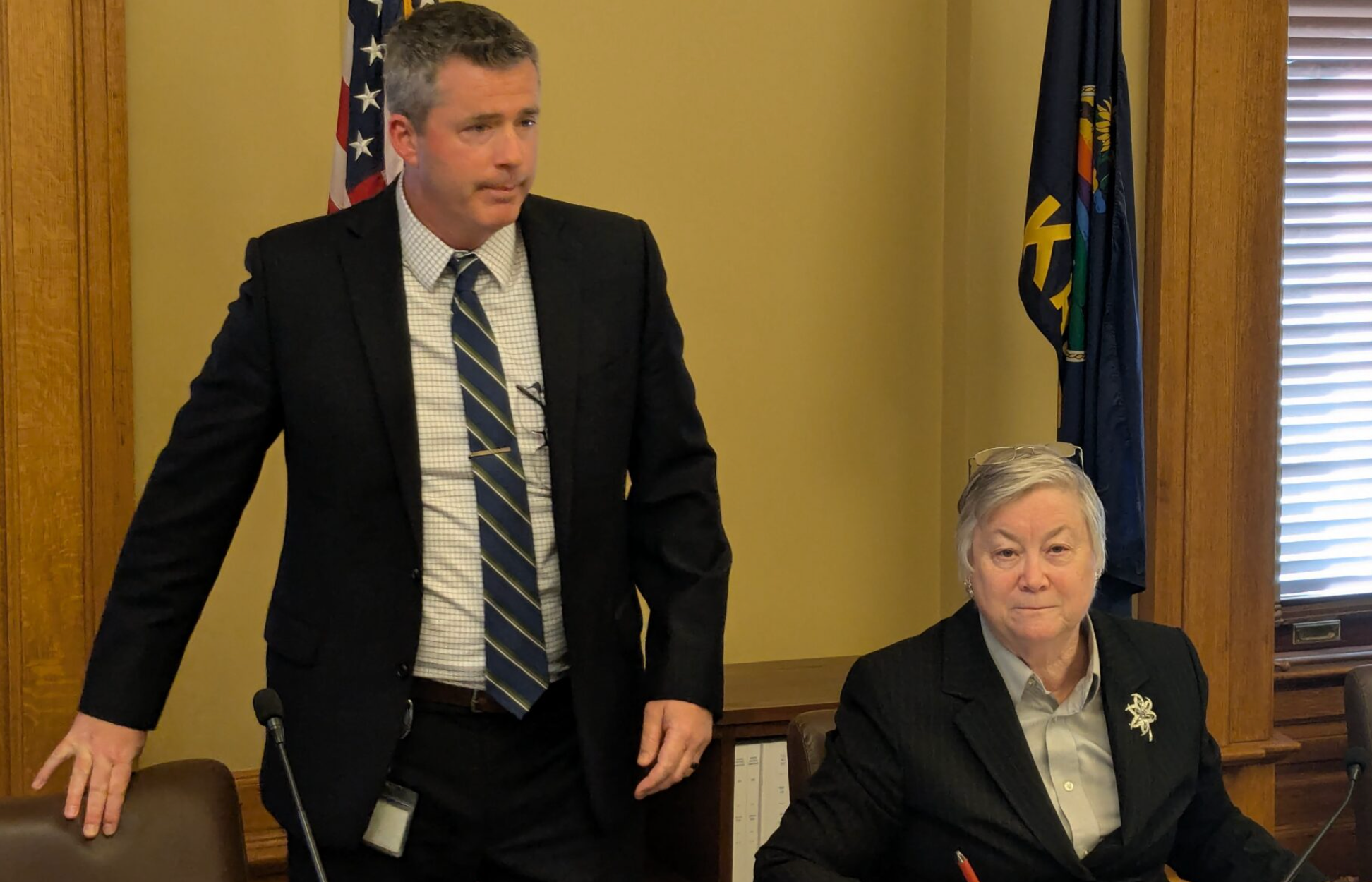
By TIM CARPENTER
Kansas Reflector
GOP House leader says anyone sounding revenue alarm likely a ‘budget boogeyman’
TOPEKA — A bullish revenue picture for state government in Kansas through the current and next fiscal years couldn’t sugarcoat projections the state budget could end up with a $730 million deficit by 2029 if lawmakers continued spending more than what was collected in revenue.
The new forecast released Thursday by the Consensus Revenue Group, which is responsible for updating financial reports twice each year, indicated the treasury could expect to collect $157 million more in the current fiscal year than projected in November. In addition, the state could receive $219 million more in the 2026 fiscal year than predicted six months ago. The state general fund takes in about $10 billion annually.
The estimating group said the state’s budget ending balance could sit at $2.29 billion at close of the current fiscal year in June, but fall to $1.73 billion in 2026, $903 million in 2027 and $63 million in 2028 before going under water by $730 million in 2029.
Democratic Gov. Laura Kelly said the latest revenue estimates from university economists and state financial experts could be viewed as positive news.
“In reality, they underscore the seriousness of the financial predicament ahead,” Kelly said. “The bizarre and irresponsible budget gimmicks used by the Republican-led Legislature spend more than the state takes in by nearly $800 million per year. Ultimately, this will lead to a historically large budget deficit.”
She said the revenue update came one week after GOP House and Senate leaders adjourned the annual legislative session. Traditionally, the Legislature remained in session until the revenue forecast was updated so spending and tax policy could be refined.
“Kansans need to demand their legislators restore fiscal sanity and fairness when they return in January,” Kelly said.
House Speaker Dan Hawkins, a Republican from Wichita, said the Legislature successfully assumed a more direct approach to developing the new state budget and produced a plan that spent less than recommended by the governor.
He said the Legislature was confident in the wisdom of the three-year, $1.2 billion income tax cut adopted in the 2024 special session and the additional tax relief approved in the 2025 regular session.
“Be wary of those who want to make political hay by invoking the budget boogeyman and screaming that the sky is falling,” Hawkins said. “These positive consensus revenue estimates reaffirm we’re headed down a smart and sustainable path as we continue to monitor all fiscal data as it’s available.”
A structural imbalance
Adam Proffitt, secretary of the Kansas Department of administration and budget director for the governor, state tax reductions and elevated spending were significant drivers of the state’s financial prospectus.
He said the extended assessment was that state revenue could remain below expenditures during the next four years unless a different approach was taken by state lawmakers.
“We need to get more structurally balanced,” Proffitt said. “This is something we’ve been watching for a couple years. I think the governor’s been pretty consistent in her message that we need to be showing fiscal restraint and making sure we have a good handle on expenditures and don’t grow them unnecessarily.”
Proffitt said the projected $800 million decline in state budget ending balances in fiscal years 2027, 2028 and 2029 would leave the state in dire financial condition. An unknown for forecasters, for a couple more months after close of tax season, was the influence of retroactive income tax cuts approved by the state lawmakers in 2024, he said. In addition, he said, the forecast changes didn’t take into account the influence of tax bills on Kelly’s desk nor possible federal policy shifts.
Shirley Morrow, director of the nonpartisan Kansas Legislative Research Department, said during a news conference at the Capitol the solution to the state’s future budget predicament was obvious.
“To me,” she said, “the simple answer — and this is going to be too simple — is increase revenue and decrease expenditures.”
Morrow said forces that could influence the state’s bottom line were tied to volatility in the U.S. economy. Factors capable of altering the fiscal assessment included persistently elevated inflation, trade policy changes relevant to agriculture exports and aviation manufacturing, shifting unemployment rates, sustained high interest rates, cuts in federal funding to states, monetary policy and geopolitical dynamics, she said.
“The reoccurring theme throughout the forecast cycle is an increased volatility in the state’s economy,” Morrow said.
She said the Kansas inflation rate in 2025 was raised from 2.3% to 2.9% while the estimate for inflation in 2026 was raised from 2.2% to 2.5%. Kansas has added 3,300 jobs over the year, she said.
In terms of agriculture, she said, crop producers continued to struggle with low commodity prices and high input costs. Livestock producers were looking to expand beef herds based on continued escalation in market prices, she said.





